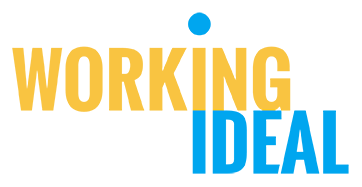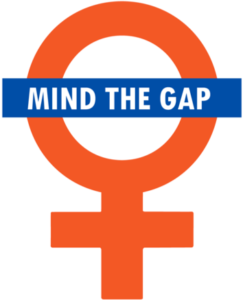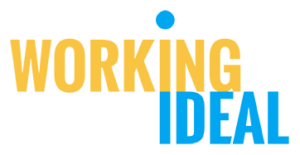Trump’s DOJ Can’t Rewrite the Law on DEI. Here’s Why Companies Shouldn’t Back Down.
This article originally appeared on Fortune.com
By: Jenny R. Yang and Pamela Coukos
The Trump administration has issued three executive orders seeking to dismantle the work of diversity, equity, and inclusion across the federal government—and to intimidate private companies and grantees into retreating from this work. These are radical, unprecedented moves aimed at upending America’s commitment to opening doors to opportunity for all.
Last month, for example, the administration rescinded the landmark Executive Order 11246, which for nearly 60 years—across five Republican administrations as well as Democratic administrations—required federal contractors to take proactive action to ensure nondiscrimination. The White House is waging an intentional campaign of fear and intimidation against private companies and federally funded schools, nonprofits, and local governments, using vague language and threats of investigations in the hope that organizations will back away from their existing programs and commitments. Some state attorneys general have jumped on the bullying bandwagon.
In the current environment, it may seem safer to some corporate leaders and boards (and their lawyers) to eliminate or scale back initiatives that are under scrutiny—but be careful of making hasty decisions. Weighing legal risks, business risks, and culture and talent risks is essential. This is a critical moment for leaders to make clear what they and their organizations stand for. Now is the time for leaders to take action that furthers our shared commitment to the American dream of opportunity for all.
Do not fall into the trap: A presidential executive order cannot nullify federal or state law.
The true meaning—and value—of DEI
Across the nation and our globe, many leading companies and organizations are continuing the essential—and fully lawful—work of removing barriers to provide access and opportunity to all. CEOs of leading corporations, including Costco, Apple, Microsoft, Deutsche Bank, and JPMorgan Chase have taken a public stand to reaffirm the importance of building strong cultures that promote fair workplaces. The commissioner of the NFL recently said, “Our diversity efforts have led to making the NFL better.” Other employers are evaluating and refining programs while carrying out a commitment to the values of opportunity, fairness, and inclusion. What these organizations know is that business success requires tapping into the full scope of talent and innovation. They also know that the fundamental premises of the attacks on diversity, equity, and inclusion are wrong.
Some claim that DEI work puts identity above “merit”—when the opposite is true. Casting a wide net for talent, ensuring fair opportunity for all to succeed, and building a culture that fosters connections across difference is common sense, a congressional mandate, and good business. DEI initiatives do not discriminate against anyone. These programs help break down favoritism, subjectivity, and secrecy in the workplace. They refocus practices toward excellence and decisions based on skills, qualifications, and business needs.
The attack on DEI and civil rights enforcement implies that we no longer need to ensure nondiscrimination at work, when barriers to equal opportunity still exist. Just last year, the Equal Employment Opportunity Commission recovered nearly $700 million for over 21,000 workers with discrimination claims. Indeed, diversity initiatives grew out of our nation’s legal mandates to prevent and remedy discrimination, and the recognition that achieving a fair and nondiscriminatory workplace for all remains a work in progress.
The attack on DEI and civil rights enforcement is also a blatant misuse of executive power. Sixty years ago, Congress came together on a bipartisan basis to pass Title VII of the Civil Right Act of 1964, which prohibits employment discrimination based on race, color, religion, sex, and national origin. In fact, 82% of Republicans voted for the Civil Rights Act. And the Supreme Court has ruled that Title VII’s prohibition against sex discrimination forbids workplace discrimination based on sexual orientation and gender identity. Civil rights laws are designed to protect everyone, to promote fair competition, and to keep doors to opportunity open to all. The Supreme Court’s decision on affirmative action in higher education has not altered this longstanding legal framework. And no executive order can change Congress’s mandate.
Diversity, equity, and inclusion at its core is about carrying out this legal commitment to workplace practices that provide equal access to good jobs and fair wages. This work is bolstered by research showing the connection between expanding opportunities and financial performance and innovation, and how improving culture reduces burnout and boosts engagement and retention.
Actions corporate leaders can take to safeguard DEI
As employers assess what to stand for, here are some proven ways to reaffirm DEI work and ensure it is anchored in American values and core principles of fairness.
Diversity: Define diversity broadly to expand opportunity. Businesses have embraced building diverse workforces and leadership to access a wider pool of talent that can bring in new ideas and contributions. The best definitions of “diversity” take a broad view of the range of perspectives and backgrounds that can add to mission and culture.
Equity: Focus on ensuring fairness in workplace practices. Equity at its core is about fairness and equal opportunity, despite efforts to portray it as divisive or discriminatory. Good policies help all workers and their employers—so make sure decisions about hiring, promotion, and pay are objective; find and remove artificial barriers to success; and give everyone a truly fair shot.
Inclusion: Build a healthy and inclusive culture. Fostering a healthy and respectful work environment should not be divisive—it helps the organization and everyone in it to succeed. Inclusion builds understanding across differences and creates an environment where everyone belongs. Use this work to find common ground in the organization’s mission and shared values to build unity and reduce polarization.
One of America’s most important ideals is that our nation is big enough for all of us to succeed no matter one’s background. Dividing America with cynical attacks on DEI does not make our country great. What makes us great is engaging the full scope of America’s talent and creativity to innovate and propel our nation’s economy. A majority of Americans support DEI programs. We will be watching to see who stands firm for equal opportunity for all.
About the authors
Jenny R. Yang is the former Chair of the U.S. Equal Employment Opportunity Commission and former Director of the Office of Federal Contract Compliance Programs.
Pamela Coukos is a former Senior Advisor at OFCCP.
Working IDEAL provides trusted, effective and innovative advice on inclusive workplaces, diverse talent and fair pay to large and small companies, universities, non-profits, unions and other organizations across the nation.

 It’s Equal Pay Day, and I’ve decided not to have
It’s Equal Pay Day, and I’ve decided not to have  It’s finally out there for everyone to see. Not just that sexual harassment and sexual assault pervades the workplace — but that decades of well-meaning responses have failed. Sexual harassment training
It’s finally out there for everyone to see. Not just that sexual harassment and sexual assault pervades the workplace — but that decades of well-meaning responses have failed. Sexual harassment training 